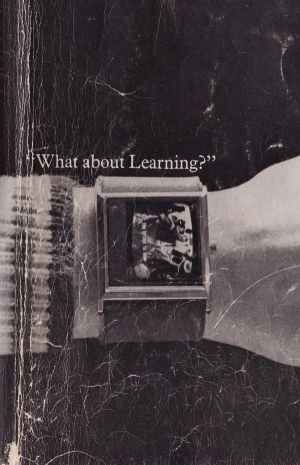What About Learning?
An excerpt:
Introduction by Deborah Saunt, Eero Saarinen Visiting Professor
Operating between academic discourse and the realities of practice, lived experiences, and co-produced knowledge, the “What About Learning?” advanced architecture studio at Yale asked how we can better share knowledge of our built and natural environment. As much as the studio was interested in the historic urban fabric and the physical context of a site, it also championed strategic research and thinking that also considered the nonphysical networks and less tangible conditions and behaviours that may unlock latent spatial potential to produce more radical and responsive architectures. In the process, students consciously challenged the conventions of architectural practice, pushed the envelope of the role of the architect or urban designer, and took on alternative roles such as “spatial strategists” and “designer-activists.” Valuing the inherent wealth of collective knowledge and the everyday that students brought with them to the table, the studio provided a platform for students to shape their own personal research agency and design briefs based on their individual preoccupations and understanding of themselves as both designers and citizens in the world.The influence of the studio has informed further research into the very nature of what constitutes the relevance of existing architectural education and what constitutes a school of architecture.
Underpinning the principles and methodologies of the studio was the idea of spatial justice shaping
a conceptual framework that addresses the intersectionality of multiple concerns—racial injustice, environmental crisis, health in-equity, etc.—and informs more equitable spatial practices. Spatial justice, at its core, provides an opportunity for people, architects, and designers to carve out spaces that give agency and power to the seldom heard and disenfranchised and facilitates a sense of belonging for those treated as outsiders. It is about increasing accessibility and facilitating adequate representation—not just in the built environment but in the city-making process—and creating platforms for people to have authorship over their shared spaces and how they are shaped over time. Spatial justice presents an opportunity for architecture to truly serve and be informed by the needs of the diverse inhabitants of our cities.
Against the backdrop of the COVID-19 pandemic, the studio focused on the relationships between dispersed learning and the right to the city, uncovering and reflecting on the human cost, challenges, and opportunities made evident over the course of “remote learning” across institutions worldwide.While the global experiment of remote learning appeared to have unlocked possibilities of overcoming mobility injustices by digitally connecting more students with educational resources, it has in many ways fallen short of redistributing power between institutions and their co-located communities. “What About Learning?” is fundamentally a question about the right to access knowledge and how our cities, buildings, and public spaces are controlled and shaped, and with it, the right to participate in civic life. With the neoliberal turn in education, learning as a lifelong activity has become codified and commercialized by educational institutions that operate within existing market conditions and infrastructures of knowledge distribution. By seamlessly blending into the digital fabric of consumerist life, much of learning has lost its intrinsic relationship to the communal spatial experience of knowledge production and its ability to challenge its own complicity. Between disembodied learning and a renewed sense of civic participation on the streets, the architectural question here is, What is the site for learning today, and what are the alternative forms of learning and exchange it could nurture?

Following in the footsteps of Denise Scott Brown, Zaha Hadid, Toshiko Mori and Yolande Daniels, in Autumn 2020 Deborah Saunt was appointed Eero Saarinen Visiting Professor of Architectural Design at the Yale School of Architecture. After production delays caused by numerous lockdowns, we're pleased to be able to finally announce that Yale selected Deborah's Advanced Design Studio, 'What about Learning?', to be produced in book form by the architectural publishers Actar Publishers, and that the book is now available for purchase! With global pandemics, social injustice and the climate emergency posing urgent questions to education and its role in shaping democratic life at large, both what and how we learn are political questions that are mediated through spatial conditions — we challenged our students to take learning outside existing privileged enclaves and consider a twofold architectural question: What is the best site for learning today? What are the alternative forms of learning and exchange it could nurture?
The Eero Saarinen Visiting Professorship was established in 1984 through the generosity and efforts of the architect Kevin Roche in honor of Eero Saarinen, who received a B.Arch. from Yale in 1934. This endowed chair enables the School to invite a distinguished architect to teach a design studio each term.